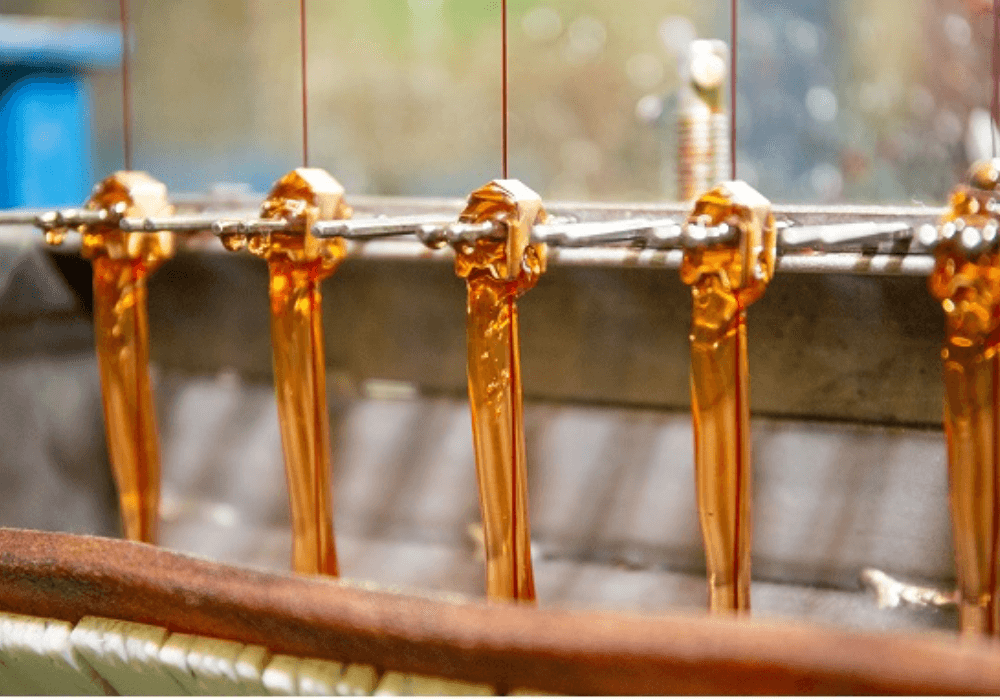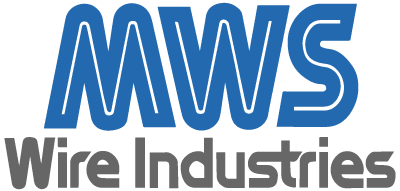Medical Wire Insulation Guide
Coating the bare conductor material with a non-conductive flexible insulation is at the heart of the MWS manufacturing process and gives the wire its dielectric strength. Dependent on the application and performance characteristics, MWS offers medical customers a wide range of insulation options, colors and builds. Insulation can be applied in single, heavy, triple or quad build, which progressively increases the thickness of the insulation layer. The application and curing of the insulation from a liquified to solid form is based on a precise and documented recipe that is custom to a part number. In order to offer a wide range of recipe options, MWS employs a wide range of machine options that vary in length, size, orientation and temperature. Our experienced technicians continuously explore new insulation options from extrusions to high-temperature coatings.
The table below gives customers an overview of insulation options. Our sales and engineering team are available to assist customers in the selection of the optimal material based on the application.

Medical Wire Insulation Guide
| Thermal Class | Insulation Type | MWS Product Code | NEMA Standard (MW 1000) | Insulation Characteristics |
|---|---|---|---|---|
| 155°C | Polyurethane 155 | P155 | MW 79 | Polyurethane-155 is a 155°C thermal class solder strippable insulation produced primarily 30 AWG and finer with quick soldering characteristics at 390°C. |
| Polyurethane Nylon 155 | PN155 | MW 80 | Polyurethane Nylon-155 is similar to the 155°C Polyurethane with the additional Nylon overcoat to improve the abrasion resistance and heat shock characteristics for coil and motor windings. Produced 10 AWG to 55 AWG, soldering temperatures are 430°C for 10 – 23 AWG, and 390°C for 24 – 55 AWG. | |
| 180°C | Polyurethane 180 | P180 | MW 82 | Polyurethane-180 combines the thermal properties of a class 180°C insulation, while offering low temperature solderability at 390°C (24 AWG and finer). |
| Polyurethane Nylon 180 | PN180 | MW 83 | Polyurethane Nylon-180 offers excellent abrasion resistance for ferrite core coils and transformers, while exhibiting high temperature thermal stress and low temperature solderability at 430°C (14 – 23 AWG ) and 390°C (24 AWG and finer). | |
| Solderable Polyester | SPT | MW 77 | Solderable Polyester wire is an ester-imide insulated wire which solders at 470°C. Since thermoplastic flow values equal or exceed 280°C, the insulation has shown excellent promise in transfer molding applications. | |
| 200°C | Polyester 200 | PT200 | MW 74 | Polyester-200 is a modified theic-polyesterimide one-part system. It has high temperature thermal properties and good chemical resistance. Normally produced in sizes 34 -56 AWG. |
| Polyester A / I Topcoat | APT | MW 35 (RD) MW 36 (SQ & RECT) | Polyester-amide-imide wire is a two-part insulation consisting of a modified polyester basecoat with a superimposed amide-imide outer coating. This wire exhibits exceptional windability, heat shock resistance, and ability to withstand overloads. Chemical resistance to most solvents and insulating varnishes is extremely good. It is not softened by refrigerants and extractions are essentially zero. | |
| 220°C | Polyamide-Imide | PAI | NEMA MW81-C | Polyamide-imides display a combination of properties from both polyamides and polyimides, such as high strength, melt processibility, exceptional high heat capability, and broad chemical resistance. PAI enamel is very thermally stable as well as abrasion and chemical resistant. PAI is often used over polyester wire enamels to achieve higher thermal ratings. |
| 240°C | Polyimide – ML | ML | MW 16 (RD) MW 20 (SQ & RECT) | ML is a film insulation made of polyimide resins and is the most popular insulation used in medical application, also for its biocompatibility characteristics. It is a Class 240°C thermal rated insulation with exceptional resistance to chemical solvents and burnout. The outstanding thermoplastic flow of over 400°C and its ability to withstand excessive overloads extends the use of wire in extreme conditions. ML is unaffected by prolonged exposure to varnish solvents and its compatible with virtually all systems. |
MWS also offers custom insulation options, including High Temp and extrusions. All trademarks are property of their respective owners. (C) 2021 MWS Wire Industries.
*Unverified, subject to verification by customer
- Limited - Less than 24 hour exposure
- Prolonged - 24 hours to 30 day exposure
- Permanent - 30 days and longer
When determining biocompatibility, devices are categorized as follows:
- Surface Devices - Items such as electrodes for monitoring, contact lenses, catheters, endotracheal tubes, sigmoidoscopes and similar devices.
- Externally Communicating Devices - such as laprascopes, blood administration devices, pacemakers, oxygenators and the like.
- Implant Devices - such as orthopedic pins or plates, heart valves, grafts, stents and similar devices.
